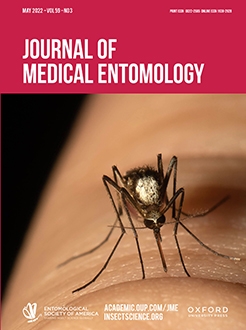Malathion is a widely used organophosphorus pesticide; it is also a molecule of forensic interest due to its moderate to high toxicity in nontarget organisms, humans included. This compound is present in some fatal intoxications, accidental or intentional; its presence in the tissues on which the cadaveric entomofauna feeds may affect its growth rate and life cycle duration leading to an error in the estimation of the minimum postmortem interval (PMImin). Since the toxic effect of malathion on the cadaveric entomofauna could affect the estimation of the PMImin, the aim of this work was to study the toxic effect of malathion on the growth and development of the scuttle fly, Megaselia scalaris, a fly of forensic interest which plays an important role in forensics cases related to human remains found indoors or in concealed environments. The study was complemented with some morphological observations; no morphological changes were observed in the larvae, nor the adult flies exposed to malathion. Malathion affects the viability of the egg and pupa, it also reduces the larval growth rate and increases the duration of the larval stage; therefore, the estimation of the PMImin, with this species when malathion is present in tissues, could be affected.
Graphical Abstract







